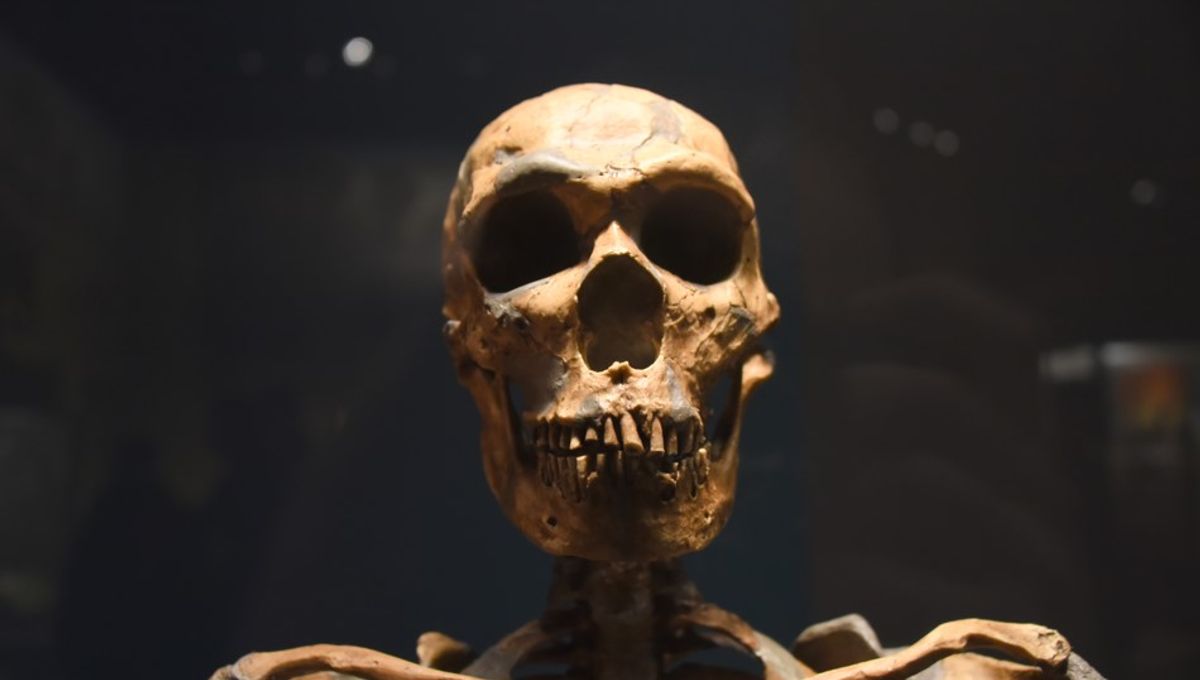
Neanderthals clung onto existence in Eurasia until roughly 40,000 years ago, yet new research suggests that their numbers declined drastically around 70,000 years prior to their eventual extinction. As a consequence, genetic and physical diversity within the Neanderthal population plummeted, leading to a largely homogeneous set of characteristics among the species’ final representatives.
ADVERTISEMENT GO AD FREE
Understanding how prehistoric hominids became Neanderthalized is something of a conundrum for scientists. At present, all we know is that our extinct relatives emerged from a situation dubbed the “Muddle in the Middle”, which refers to the complex and overlapping attributes shared by different human species during the Middle Pleistocene.
Out of this hodgepodge, a prototype known as the “pre-Neanderthals” eventually appeared, with the best skeletal remains from this population having been found at the Sima de los Huesos site in Spain and dated to 430,000 years ago. At some point, the species’ defining characteristics began to coalesce, giving rise to the “early Neanderthals”, such as those represented by the 120,000 to 130,000-year-old fossils from Krapina in Croatia.
Only in the last 110,000 years or so did the so-called “classic Neanderthal” emerge, exhibiting a suite of morphological features that are unmistakably Neanderthalic. After the first full genome belonging to this species was sequenced in 2010, it became apparent that these late Neanderthals were considerably less genetically diverse than modern humans, leading to the suspicion that this prehistoric hominid must have experienced a catastrophic population crash – or genetic bottleneck – at some point.
Exactly when this mass die-off occurred is a matter of debate, with some scholars believing it happened early in the Neanderthal lineage while others suspect it coincided with the emergence of classic Neanderthals. Unfortunately, a lack of intact DNA from the earlier Neanderthals has prevented scientists from reconstructing the full genetic history of these ancient hominids.
To get around this issue, the authors of a new study conducted an in-depth morphological analysis of the so-called “bony labyrinth” of the inner ear of different Neanderthal populations. Comparing the pre-Neanderthal specimens from Sima de los Huesos to the early Neanderthals of Krapina and various classic Neanderthals, the researchers were able to illustrate how morphological diversity ebbed and flowed throughout the existence of this enigmatic species.
ADVERTISEMENT GO AD FREE
Results indicated that the Krapina Neanderthals were more variable than those from Sima de los Huesos, which means genetic diversity must have increased between 430,000 and 120,000 years ago. As such, the study authors rule out the possibility of a bottleneck occurring early in the Neanderthal timeline.
However, classic Neanderthals displayed a marked reduction in morphological variation compared to early Neanderthals, which means the bottleneck must have post-dated the Krapina population. It’s unclear exactly when or why the population crashed, but some researchers have previously suggested that the disaster occurred roughly 110,000 years ago.
“By including fossils from a wide geographical and temporal range, we were able to capture a comprehensive picture of Neanderthal evolution,” explained study co-author Mercedes Conde-Valverde in a statement. “The reduction in diversity observed between the Krapina sample and classic Neanderthals is especially striking and clear, providing strong evidence of a bottleneck event.”
At the same time, lead author Alessandro Urciuoli said, “We were surprised to find that the pre-Neanderthals from the Sima de los Huesos exhibited a level of morphological diversity similar to that of the early Neanderthals from Krapina.”
ADVERTISEMENT GO AD FREE
“This challenges the common assumption of a bottleneck event at the origin of the Neanderthal lineage,” he added.
The study is published in the journal Nature Communications.
Source Link: Neanderthals Suffered A Massive Population Crash 110,000 Years Ago